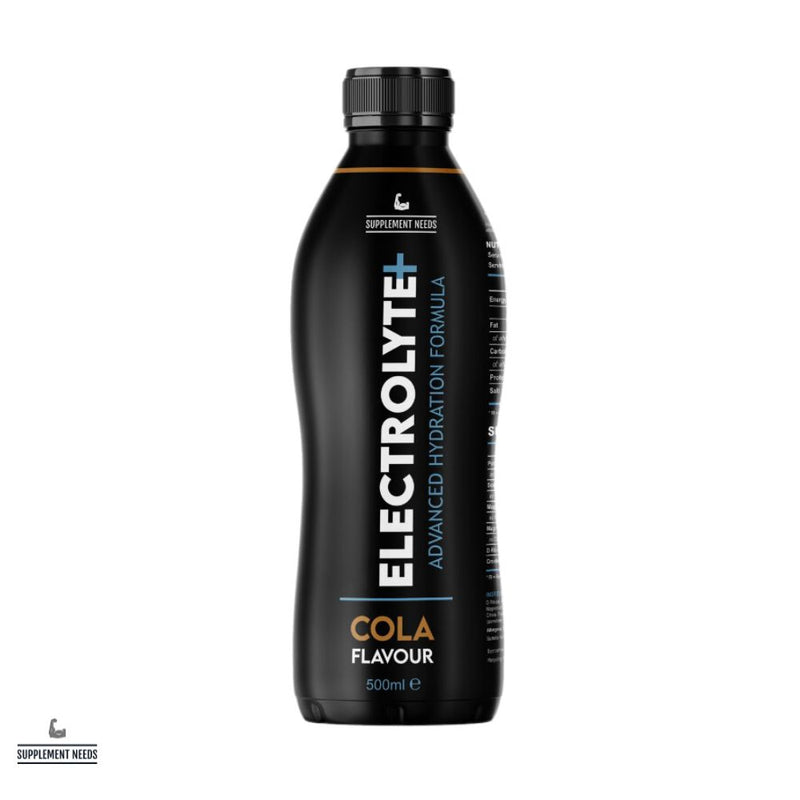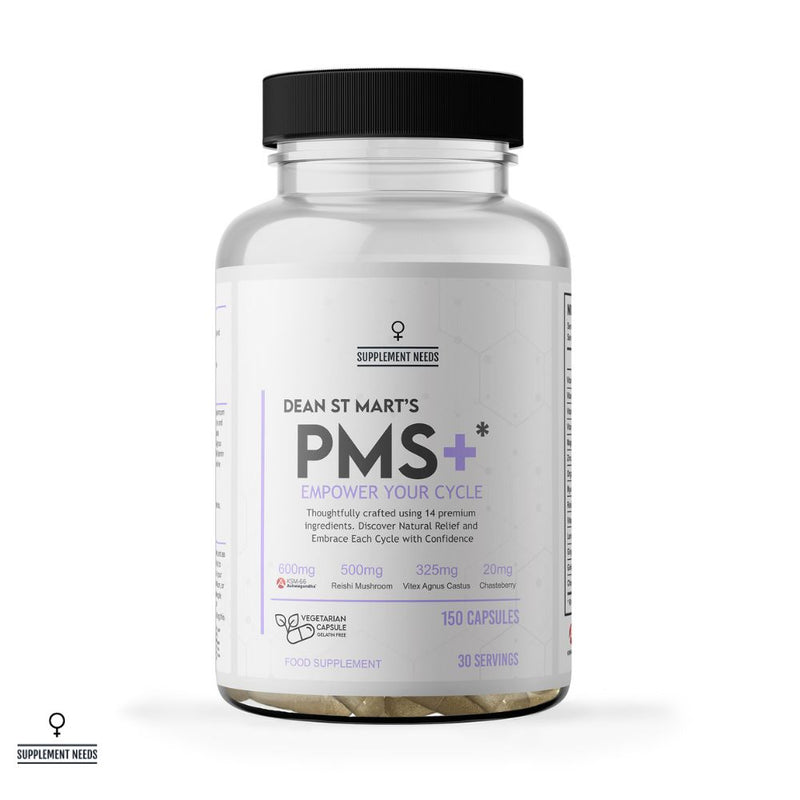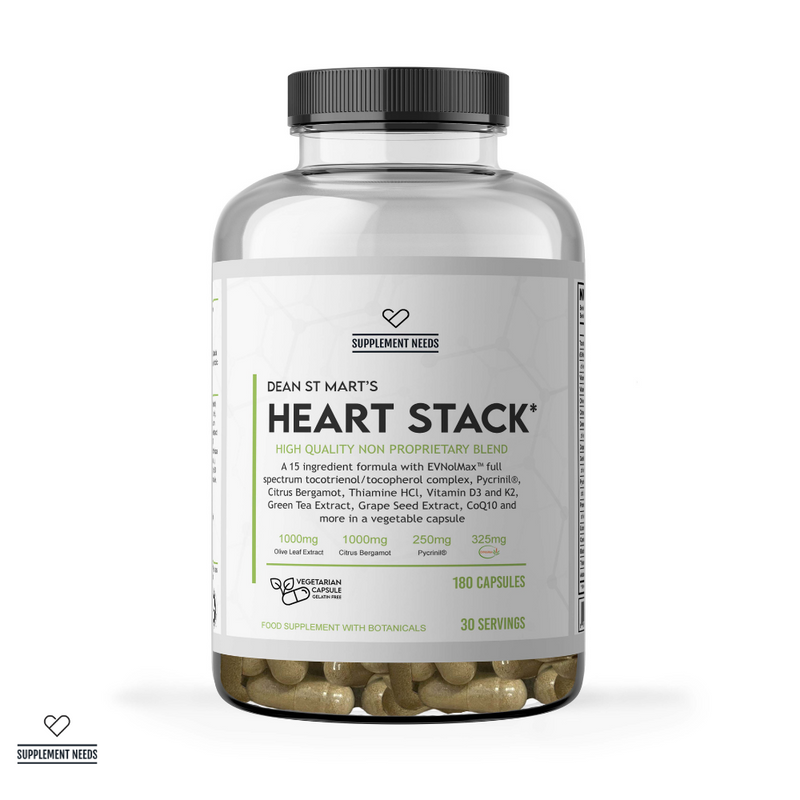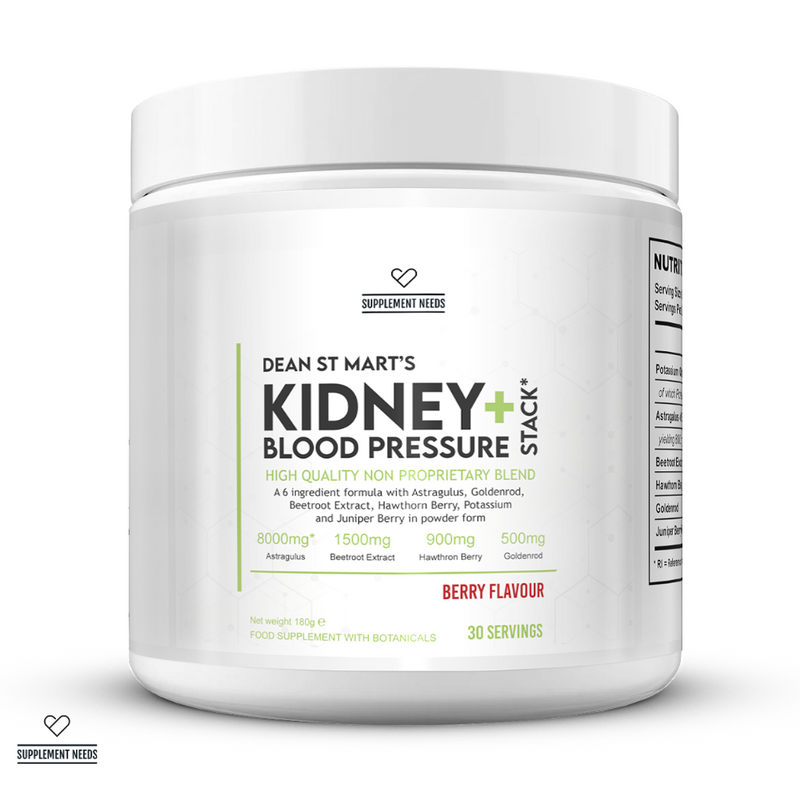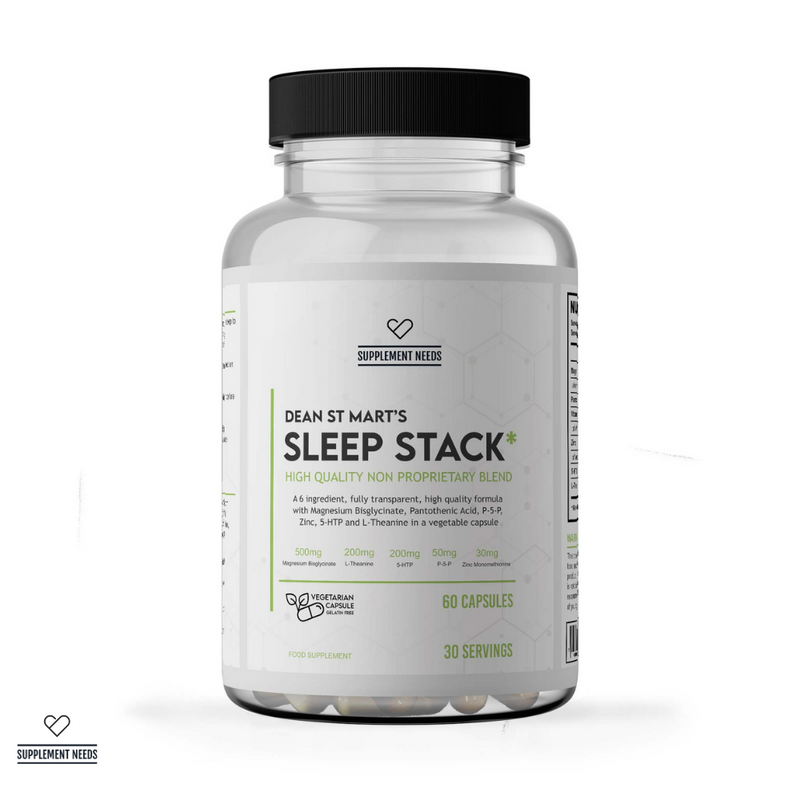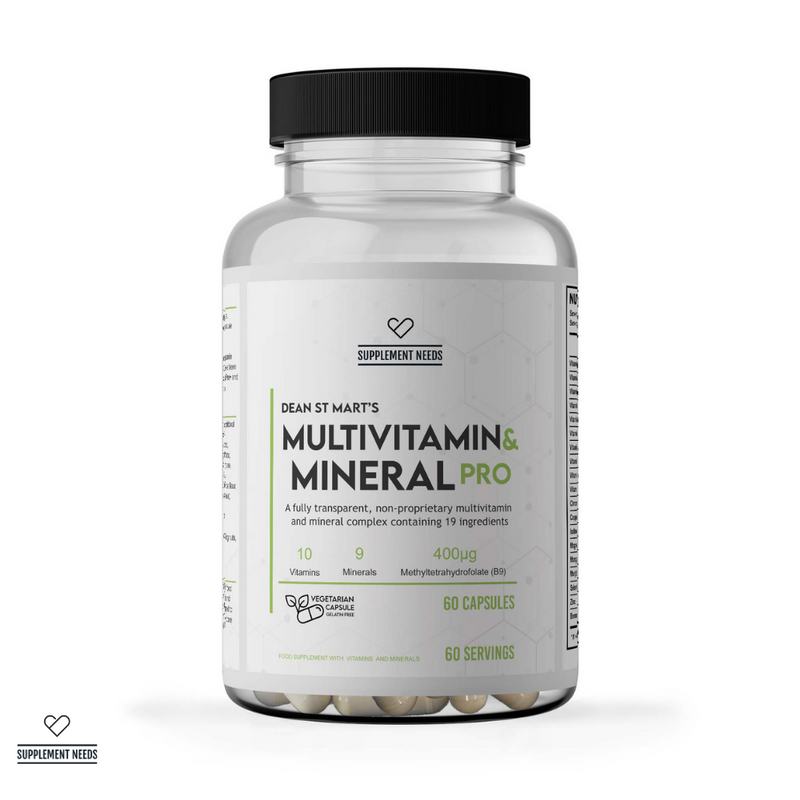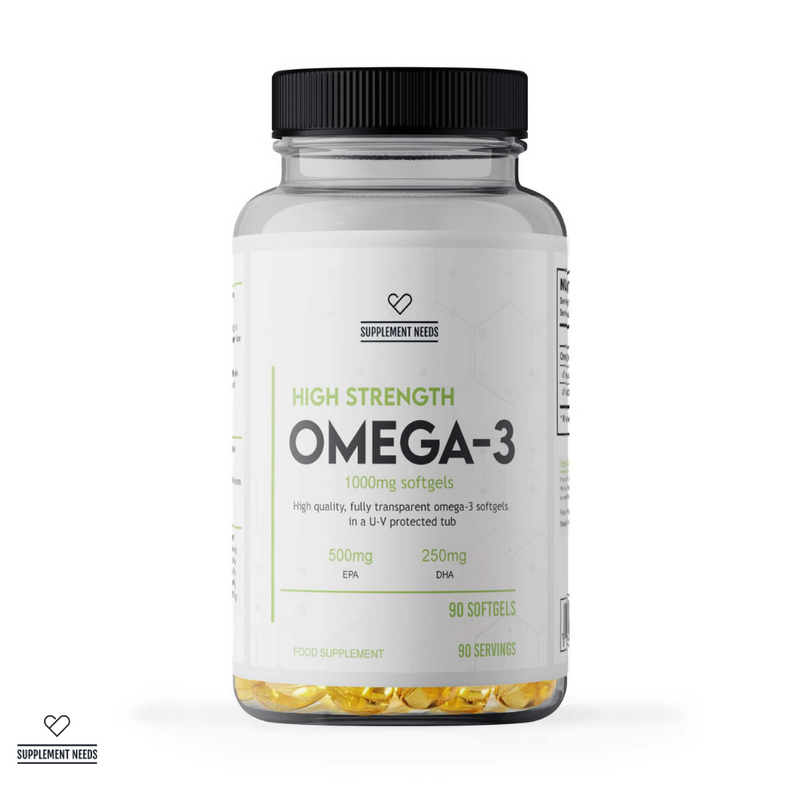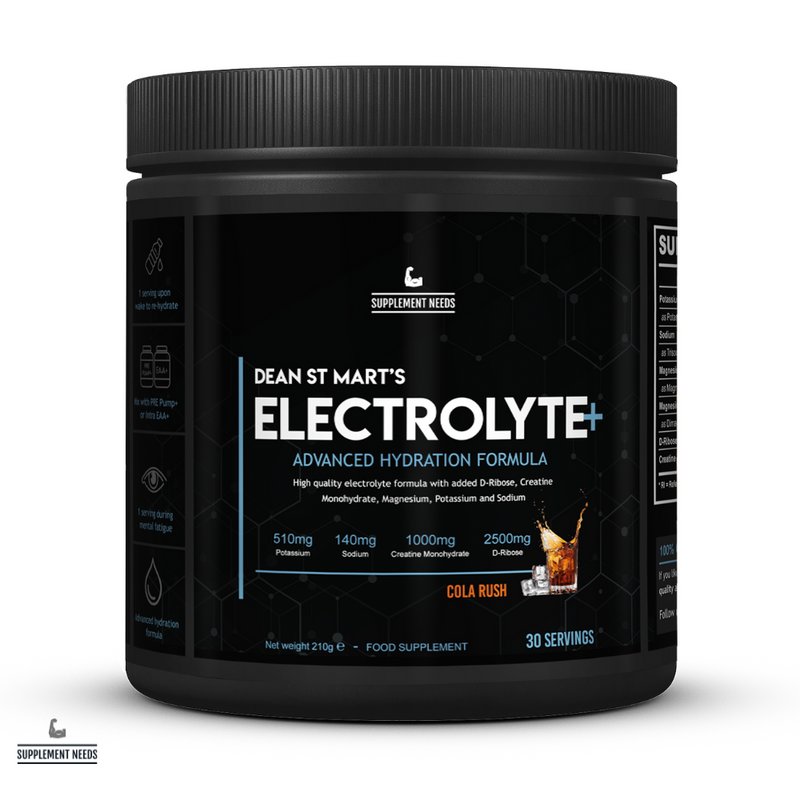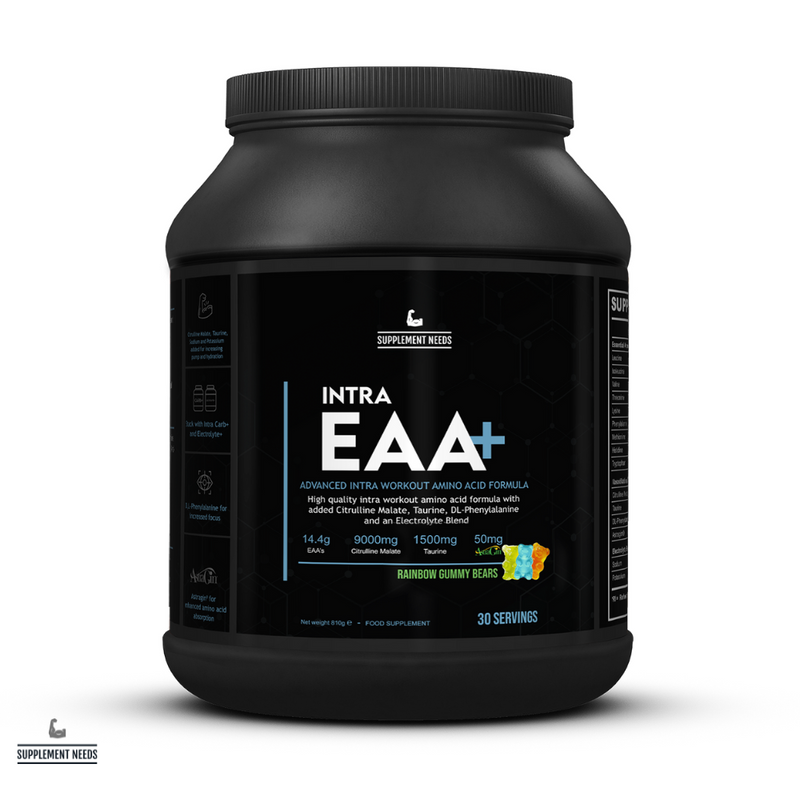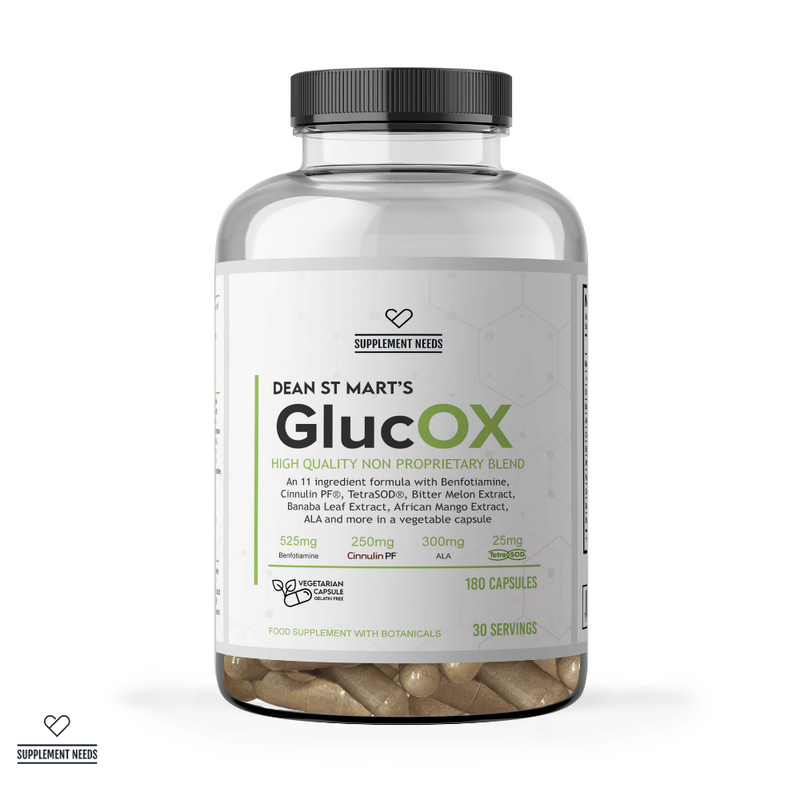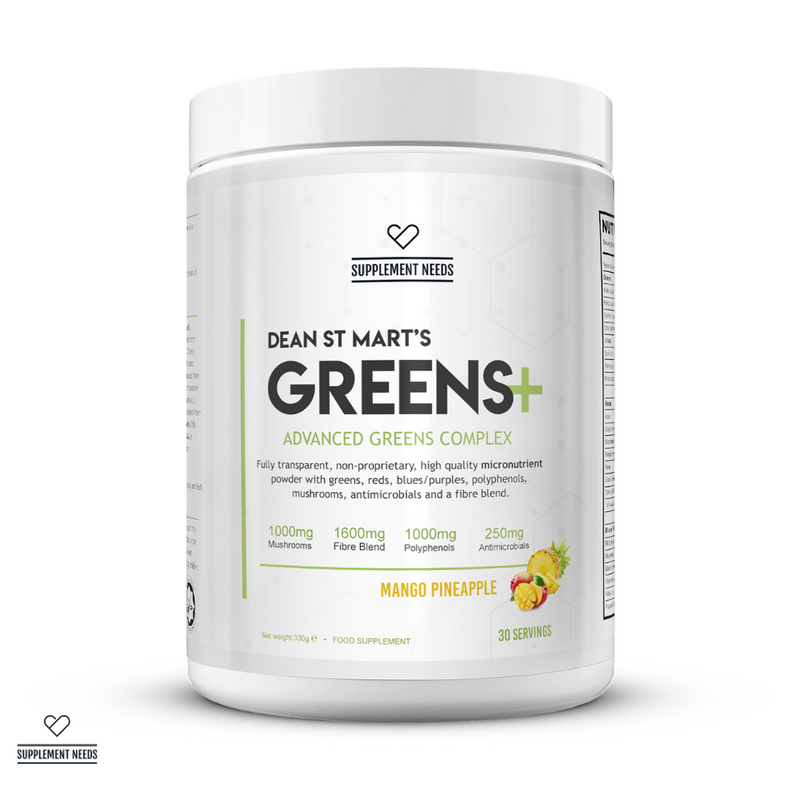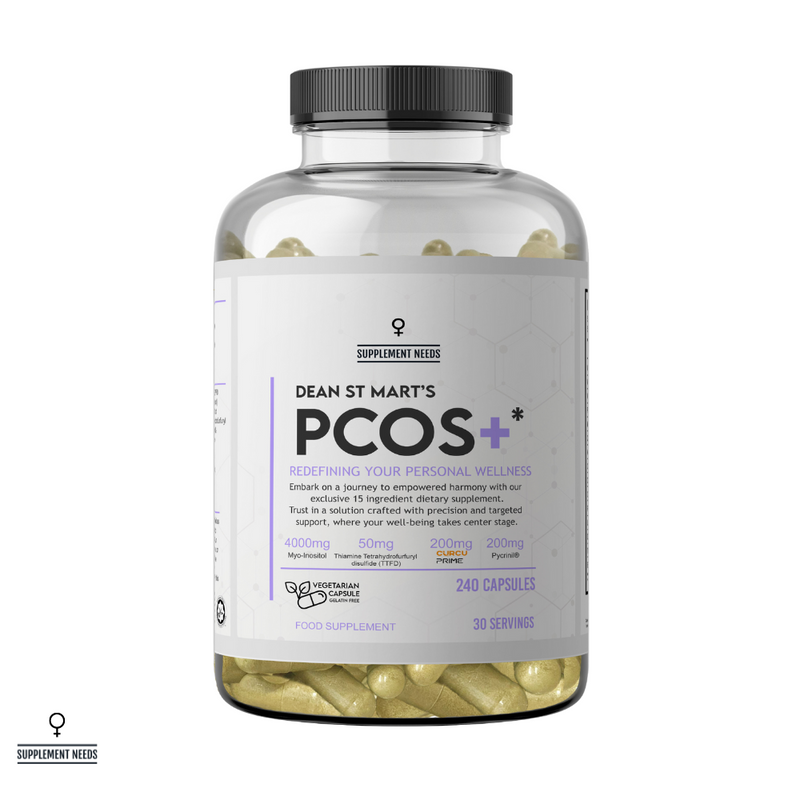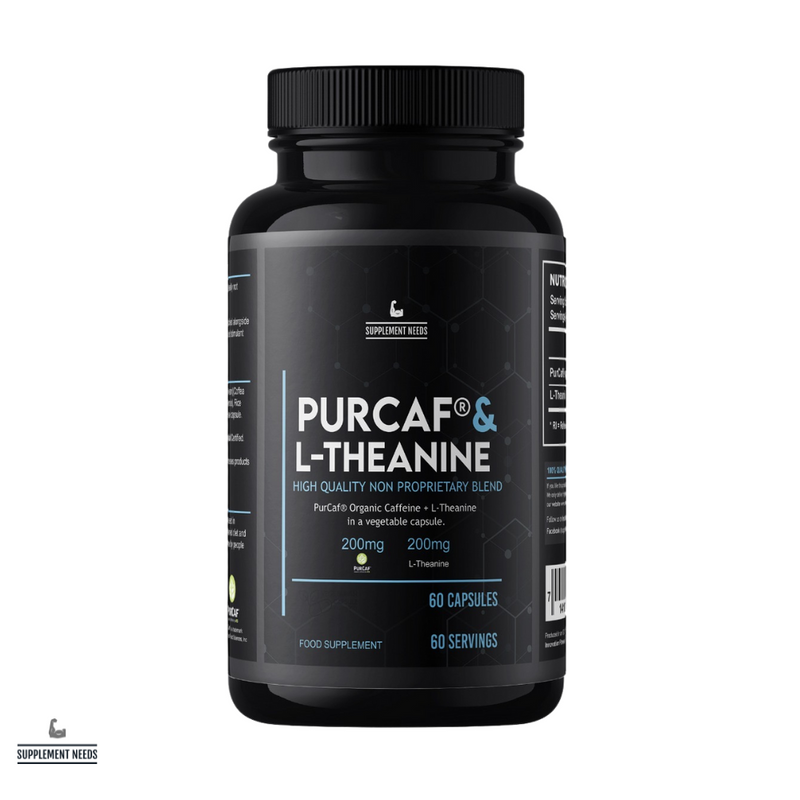If you’re even tangentially connected with the fitness industry, you’ll have heard of creatine. It’s not only one of the most popular supplements on the market due to its benefits with strength building and lean muscle increases - but also one of the most well-researched.
But, what exactly does creatine do in the body? What evidence do we have of the benefits? Find out with this guide…
What is creatine?
Used by everyone from gym pros to bodybuilders, it’s hard to exist in the fitness sphere without hearing about creatine. But, what is it?
Chemically, creatine is a glycine-derivative amino acid1 containing methyl and amino groups attached to the nitrogen. Or, in simpler terms, creatine is an amino acid that the body uses for a range of important functions.
The human body actually produces around half the creatine you need (approximately 1-2g) endogenously (i.e. internally), in your liver, kidneys, and pancreas.
To synthesise creatine, the body uses three amino acids; namely Glycine, Arginine, and Methionine; in addition to two enzymes, L-Arginine:Glycine Amidinotransferase (AGAT), which produces Guanidinoacetate Acid (GAA), and; Guanidinoacetate Methyltransferase (GAMT), which in turn methylates GAA for creatine production.
Around 95% of internally produced creatine is stored in your muscles, while the remaining 5% is split between the brain, heart, liver, kidneys, and other important tissues2. Of this 95%, approximately two thirds is ‘bound with inorganic phosphate and stored as phosphocreatine (PCr) with the remainder stored as free creatine (Cr).’3
The other half of your daily creatine requirements can be obtained via your diet. More specifically, many people get creatine from foods like red meat and seafood. However, if you follow a restricted diet, such as vegetarianism or veganism, you may find that you have to supplement with creatine instead.
Note: supplementary creatine becomes even more essential for those looking to improve their fitness and athletic performance (as you will see below).
What are the different types of creatine?
As a dietary supplement, there is a wide selection of forms of creatine that are differentiated by their characteristics or chemical composition. The most well-known forms of creatine are4:
-
Creatine Monohydrate: chemically, creatine monohydrate is a similar form to what is produced endogenously5. As the most studied form of creatine, there is plenty of evidence supporting its bioavailability and performance as a beneficial supplement.
-
Creatine Ethyl Ester: this form of creatine ‘consists of a creatine bound to esterified ethanol’ in an attempt to improve bioavailability. This is because esters are lipophilic (dissolve easily into fats), which can help this form to pass through biological membranes.
-
Creatine Gluconate: as the name suggests, this form is where a creatine molecule is bonded to a glucose molecule. Again, this is thought to potentially increase absorption and muscular uptake.
-
Creatine Citrate: bonding a creatine molecule with citric acid, this modified form of creatine aims to improve absorption, and potentially reduce intestinal discomfort as it is more water-soluble.
-
Creatine Magnesium Chelate: chelation refers to the bonding between a metal (in this case magnesium) to another molecule (i.e. creatine). This form of creatine supplementation is theorised to work synergistically to both improve absorption and stability; but also as the body uses both creatine and magnesium in ATP production.
Note: creatine monohydrate has been thoroughly investigated, and as such is the preferred form for the best creatine supplements. While there are various claims around which form is optimal with regard to bioavailability, absorption, effectiveness and affordability, current research hasn’t shown compelling arguments for any other forms against creatine monohydrate.
It’s with this strong foundation of evidence that our very own Supplement Needs Creatine is 100% creatine monohydrate to ensure your daily creatine levels are optimised.

What does creatine do in the body?
Knowing what creatine is from a chemical perspective is all well and good, but it’s arguably more important to understand the role it plays within the body. Creatine itself is essential for several bodily functions, including:
ATP regeneration
Your body needs energy simply to exist, let alone complete basic actions such as breathing, moving, and digesting food. This demand for energy increases during periods of high activity like exercise. There are two ways the body produces energy: aerobic or anaerobic respiration.
In its simplest explanation, the process of aerobic respiration in the body is where the body uses oxygen and glucose to create energy, with carbon dioxide and water as byproducts in the following reaction:
oxygen + glucose → carbon dioxide + water + energy
6O2 + C6H12O6 → 6CO2 + 6H2O + energy (ATP)
Alternatively, the body can use anaerobic respiration, which doesn’t use oxygen as part of the reaction. Instead, the body breaks glucose down into lactic acid and energy, or:
glucose → lactic acid + energy
C6H12O6 → 2C3H6O3 + energy (ATP)
ATP (adenosine triphosphate) then, is an essential chemical your body needs for energy production; it’s often called the ‘energy currency of the cell’6 because of it. But, while respiration is the most common way to produce ATP, the human body is a wondrous and complex organism - which means it’s not the only way.
During high-intensity, but short-term, activities, the body needs energy quickly - typically more quickly than regular respiration can provide. Instead, your muscles can break down ATP into ADP (adenosine diphosphate) to supply the energy required, because the severing of a phosphodiester bond releases energy that your body can use. As an obvious consequence, this extra energy is limited to the amount of ATP in the muscles at any one time - unless it can be regenerated.
And that’s where creatine fits in. Creatine, or more specifically the phosphocreatine system, is essential for short-term anaerobic ATP regeneration.
But, how?
During the energy reaction, ATP is degraded to ADP through the severing of a phosphate bond. Or:
adenosine triphosphate → adenosine diphosphate + inorganic phosphate + energy
As we mentioned above, the body keeps the majority of creatine in the muscles as phosphocreatine, using the enzyme creatine kinase. This effectively stores high-energy phosphate bonds for future use. By breaking down phosphocreatine into creatine and inorganic phosphate, the body can use the resulting free energy to rapidly resynthesise ATP, improving ATP availability for the energy reaction7.
phosphocreatine → inorganic phosphate + creatinine + free energy
(using the released energy to resynthesise) →
adenosine diphosphate + inorganic phosphate → adenosine triphosphate
Note: creatinine is a byproduct of the reaction, and is typically filtered out by the kidneys and excreted in your urine.
Cellular hydration
The average human body is approximately 60% water (with allowances made for gender, age, body composition etc). Water is essential for pretty much everything in your body – from blood to brain tissue. But it’s also used on a cellular level. Your cells need to be properly hydrated to:
-
Maintain proper cellular shape and size.
-
Sustain membrane permeability.
-
Perform basic or more complex chemical reactions such as metabolism or protein synthesis.
-
Transport nutrients and waste products around the body to their intended destination.
To maintain intracellular hydration, your body operates according to a principle called osmosis.
In fact, you might remember this from your school science days. Effectively, osmosis describes the free movement of water from highly diluted solutions (with high water content) to concentrated solutions (with low water ratios). This is designed to re-establish equilibrium and cellular homeostasis.
But, did you know that creatine can have an impact on intracellular hydration?
Creatine is hygroscopic8, which means that it easily takes up and retains water. On a cellular level, creatine can help to increase hydration levels.
Note: if you’ve ever taken creatine supplements, you might have noticed this phenomenon, as one of the main initial side-effects is increased water retention.
Aside from the obvious benefits of balanced cellular hydration, there is some evidence to suggest that the support from creatine in this manner is why it can help to boost muscle strength.
Research suggests that an increased cellular hydration can cause cells to swell, which the body views as an ‘anabolic proliferative signal’9. Or, in simpler terms, this means that increased cellular hydration can stimulate the body to trigger cell growth and division. Improved cellular hydration may also create an environment more suited to protein synthesis10, which has potential benefits on muscle growth over time.
Recovery
Part and parcel of existing in your body is recovery. Whether this is after high-stress situations, increased physical exertion, or repair after an injury, recovery is a key principle to maintaining your overall health. According to Wax et. al., ‘the term recovery is contextual in nature and typically pertains to either physiological, subjective, or performance-based parameters’11.
Interestingly, creatine plays a part in more than one of these parameters through its mechanisms of action. As we discussed above, phosphocreatine is essential for rapid ATP regeneration. The increase of available energy supports an increased work capacity and performance-based recovery. Or, to put it simply, creatine can help you maintain your form for longer when you exercise, allowing you to complete additional sets of an exercise.
There is also evidence to suggest that creatine supplementation can ‘augment recoverability between bouts of intermittent high-intensity activity’12. Effectively, research has shown that having elevated levels of intramuscular phosphocreatine during rest periods helps to sustain your performance for longer without a heavy decline in power output.
Physiologically, there is promising evidence to suggest that creatine may play a role in post-exercise inflammation reduction. Inflammation is the physical response to damage or illness, and informs the body to send immune cells for repair. As such, the immediate response is not a bad thing, but chronic inflammation can be harmful. While more research is required to fully understand creatine and its influence in this area, preliminary studies suggest that there are several potential avenues in which creatine reduces inflammation13:
-
Modulation of cytokines: cytokines act as messengers that inform the body of whether an inflammation response is necessary. Creatine has been seen to modulate these, promoting an anti-inflammatory environment.
-
Suppression of pro-inflammatory molecules: reducing the activity of neutrophils (a certain type of white blood cell) can reduce muscular inflammation.
-
Inhibition of inflammatory markers after exercise: some studies have explored how creatine can reduce increases in inflammatory markers such as prostaglandin-E2 and TNF-ɑ, which naturally increase during high-intensity exercise.

The potential benefits of creatine supplementation
As you’ve seen, creatine plays a vital role in a range of bodily processes – and there is a clear argument for increasing your levels via supplementation, particularly if you’re engaging in short bursts of high-intensity exercise such as resistance training or HIIT workouts. With an understanding of the mechanisms of action, we will now explore some of the more tangible benefits, some of which we touched on above…
Boost exercise performance
One of the primary reasons athletes, bodybuilders, and other exercise enthusiasts take creatine supplements is that they can potentially help to boost athletic performance.
Increased muscle creatine levels facilitate the ATP regeneration cycle we explained above, which creates more available energy. During exercise, this allows you to maximise each session – particularly with resistance exercise, where you may be able to work with heavier weights, or one weight for longer14.
Increased muscle strength
A mutual benefit to the above, a boost in exercise performance from creatine also works to improve your muscle strength and mass. The extra energy available from ATP regeneration can lead to greater gains in muscle strength and mass over time (primarily when combined with a resistance exercise programme)15.
Post-exercise recovery
As we have explained, creatine supplementation has shown promising evidence for reducing inflammation and supporting better recovery after exercise. This has been explored in several ways16:
-
During immediate recovery: such as between sprints or weight lifting sets, where creatine supports the resynthesis of ATP.
-
In the days after exercise: the improved glycogen resynthesis from creatine and carb loading can support better recovery and subsequent performance.
-
On exercise-induced muscle damage (EIMD): some studies have shown creatine supplementation to have a positive effect of mitigating this.
-
After injury or immobilisation: maintaining creatine levels may prove advantageous to supporting long-term recovery.
Improved cognitive function
Unsurprisingly, since it's functionally in charge of everything, your brain has incredibly high energy requirements – and is heavily reliant on ATP to meet these. Just like in muscle tissue, creatine has been shown to support energy production in the brain, especially when the demand is high.
The benefits of creatine, therefore, have been studied with regard to their impact on cognitive function. Research has found that maintaining ATP concentration is important for the brain, and may explain why there appears to be mental benefits to supplementing creatine17. For example, there is tentative evidence to suggest that creatine may improve short-term memory, and intelligence/reasoning in healthy study participants18 – although as this is moderately subjective, more research is required.
The main conclusion to take away is that the role of creatine in energy production is not just beneficial for resistance training, but also for your brain.
Potential injury reduction
Aside from recovery, creatine has been explored as a preventative measure against injury. Several studies have reported that creatine has the potential to reduce musculoskeletal injuries during training (in addition to attenuating dehydration and muscle cramping)19, with participants of one study of American football players experiencing fewer incidences of:
-
Muscle tightness.
-
Muscle strains/pulls.
-
Non-contact injuries.
-
Total injuries and missed practices.
This reduction in injury may be for a range of reasons, including:
-
An increase in energy can reduce mental fatigue that might cause handling errors.
-
Improved muscle strength can offer more control or stability.
-
Reduced muscle membrane fluidity and increased stiffness may decrease damage from exercise20.
What is the best creatine?
At this point, you’re potentially about to go out and buy some creatine. That’s great, but before you do, make sure you read this next section.
Why? Because, not all creatine is created equal.
If you want to ensure you invest your hard-earned money in only the best creatine powder, then look for the following characteristics.
Micro-ionised
This refers to the physical process of reducing the size of the individual powder granules of creatine. In other words, creatine powders that have been subjected to the process of micronisation have a much ‘finer’ consistency, with far smaller particle size compared to non-micronised creatine powders.
Micronisation can be achieved in a number of different ways, including; mechanical milling such as jet milling, ball milling, and pin milling or via supercritical fluid technology like the RESS process (Rapid Expansion of Supercritical Solutions), the SAS method (Supercritical Anti-Solvent), and the PGSS method (Particles from Gas Saturated Solutions).
If it’s not immediately apparent, micronised creatine powder has a number of benefits.
The primary benefit is increased solubility. In short, finer, smaller particles have higher dissolution rates (when mixed with a liquid like water), which, in turn, increases absorption into the body21.
Put another way, micronised creatine powder will be much more readily absorbed by your body than non-micronised creatine powder.
In addition to enhanced efficacy and absorption, it is believed that micronised creatine is less likely to induce stomach bloating and gastrointestinal distress22.
Stackable
We know that the majority of people who supplement their diet with creatine, don’t just take creatine in isolation. They’re typically have a number of other supplements incorporated into their dietary regimen.
If that sounds like you, then you should look for a creatine powder that has been designed and formulated to be stacked alongside other supplements.
That’s why, here at Supplement Needs, our Creatine Monohydrate has been designed to be stacked alongside both INTRA EAA+ and INTRA CARB+ to ensure optimal nutritional recovery and hydration.
Discover premium creatine monohydrate at Supplement Needs

As one of the most researched substances in the world, there is a lot of evidence to explain what creatine does in the body – and why it’s beneficial for athletes, bodybuilders, and even regular health-conscious exercisers and fitness fanatics.
But, before you consider adding this to your training diet, you need to make sure you’re getting the best. At Supplement Needs, we never compromise on performance or integrity. We stand by principles of transparency and unrelenting quality to ensure you get the best products to support your health.
Here’s why choosing Supplement Needs just makes sense:
-
Evidence-backed and research-driven formulas: we’re not happy with trusting just anyone with our supplements. That’s why our Creatine Monohydrate has been designed and researched by our very own expert. Dr. Dean St Mart PhD holds a double first class honours degree in chemistry and pharmaceutical chemistry from the National University of Ireland Maynooth, as well as a PhD in synthetic organic chemistry and fluorescence spectroscopy. Who else can boast the same? ✅
-
Supreme accreditation and manufacturing standards: all of our products are manufactured in the UK to Good Manufacturing Practices (GMP) and ISO standards (ISO 22000:2018) to ensure they are consistent, safe, and appropriate for their intended use. ✅
-
Total ingredient quality and transparency: not only do we only use the highest quality ingredients; including the active and bioavailable forms where appropriate, but we’ve resolved to be completely open about what we use – including their source and dosage. ✅

Want to maximise your gains? Don’t just stick to one supplement. Working with renowned athlete Shane Flowers (who won Britain's Strongest Man in 2021, his first time of asking), we’ve created the Shane Flowers Daily Non-Negotiable Stack. Containing creatine monohydrate, our superb electrolyte blend, and more, this is a bundle of supplements geared towards optimal health and performance.
Shop Supplement Needs creatine powder range now
For more insights and information about supplements, read the Supplement Needs blog…
Glucosamine & Joint Health: What You Need to Know | What Does it Mean When a Supplement is Liposomal? | Maintaining Kidney Health: What You Need to Know
Disclaimer
The information on this website should not be used as a substitute for professional medical care or advice. If you have questions about your health, please contact your doctor.
References
1. National Center for Biotechnology Information, PubChem Compound Summary for CID 586, Creatine [online]. https://pubchem.ncbi.nlm.nih.gov/compound/Creatine. Accessed on 2nd April 2025.
2. Cleveland Clinic, Creatine [online]. https://my.clevelandclinic.org/health/treatments/17674-creatine. Accessed on 2nd April 2025.
3. Kreider, R.B., & Stout, J.R., 2021, ‘Creatine in Health and Disease’, Nutrients, 13(2):447. https://pmc.ncbi.nlm.nih.gov/articles/PMC7910963/. Accessed on 2nd April 2025.
4. Gutiérrez-Hellín, J., et al., 2025, ‘Creatine Supplementation Beyond Athletics: Benefits of Different Types of Creatine for Women, Vegans, and Clinical Populations – A Narrative Review’, Nutrients, 17(1):95. https://www.mdpi.com/2072-6643/17/1/95. Accessed on 2nd April 2025.
5. National Center for Biotechnology Information, PubChem Compound Summary for CID 80116, Creatine Monohydrate [online]. https://pubchem.ncbi.nlm.nih.gov/compound/Creatine-Monohydrate. Accessed on 2nd April 2025.
6. Dunn, J., & Grider, M.H., 2023, ‘Physiology, Adenosine Triphosphate’, StatPearls [Internet], https://www.ncbi.nlm.nih.gov/books/NBK553175/. Accessed on 2nd April 2025.
7. Kreider, R.B., & Stout, J.R., 2021, ‘Creatine in Health and Disease’, Nutrients, 13(2):447. https://pmc.ncbi.nlm.nih.gov/articles/PMC7910963/. Accessed on 3rd April 2025.
8. Gutiérrez-Hellín, J., et al., 2025, ‘Creatine Supplementation Beyond Athletics: Benefits of Different Types of Creatine for Women, Vegans, and Clinical Populations – A Narrative Review’, Nutrients, 17(1):95. https://www.mdpi.com/2072-6643/17/1/95. Accessed on 3rd April 2025.
9. Lorenzo, I., Serra-Prat, M., & Yébenes, J.C., 2019, ‘The Role of Water Homeostasis in Muscle Function and Frailty: A Review’, Nutrients, 11(8):1857. https://pmc.ncbi.nlm.nih.gov/articles/PMC6723611/. Accessed on 3rd April 2025.
10. Wu, S-H., et al., 2022, ‘Creatine Supplementation for Muscle Growth: A Scoping Review of Randomized Clinical Trials from 2012 to 2021’, Nutrients, 14(6):1255. https://pmc.ncbi.nlm.nih.gov/articles/PMC8949037/. Accessed on 3rd April 2025.
11. Wax, B., et al., 2021, ‘Creatine for Exercise and Sports Performance, with Recovery Considerations for Healthy Populations’, Nutrients, 13(6):1915. https://pmc.ncbi.nlm.nih.gov/articles/PMC8228369/. Accessed on 3rd April 2025.
12. ibid.
13. Cordingley, D.M., Cornish, S.M., & Candow, D.G., 2022, ‘Anti-Inflammatory and Anti-Catabolic Effects of Creatine Supplementation: A Brief Review’, Nutrients, 14(3)544. https://pmc.ncbi.nlm.nih.gov/articles/PMC8839648/. Accessed on 3rd April 2025.
14. Kurosawa Y, Hamaoka T, Katsumura T, et. al. Creatine supplementation enhances anaerobic ATP synthesis during a single 10 sec maximal handgrip exercise [online]. Available at: https://pubmed.ncbi.nlm.nih.gov/12701817/ (Accessed on 4th April 2025).
15. Burke, R., et al., 2023, ‘The Effects of Creatine Supplementation Combined with Resistance Training on Regional Measures of Muscle Hypertrophy: A Systematic Review with Meta-Analysis’, Nutrients, 15(9):2116. https://pubmed.ncbi.nlm.nih.gov/37432300/. Accessed on 3rd April 2025.
16. Rawson, E.S., Miles, M.P., & Larson-Meyer, D.E., 2018, ‘Dietary Supplements for Health, Adaptation, and Recovery in Athletes’, International Journal of Sport Nutrition and Exercise Metabolism, 28(2):188-199. https://journals.humankinetics.com/view/journals/ijsnem/28/2/article-p188.xml. Accessed on 3rd April 2025.
17. Sandkühler, J.F., et al., 2023, ‘The effects of creatine supplementation on cognitive performance – a randomised controlled study’, BMC Medicine, 21:440. https://bmcmedicine.biomedcentral.com/articles/10.1186/s12916-023-03146-5. Accessed on 3rd April 2025.
18. Avgerinos, K.I., et al., ‘Effects of creatine supplementation on cognitive function of healthy individuals: A systematic review of randomized controlled trials’, Experimental Gerontology, 108:166-173. https://www.sciencedirect.com/science/article/abs/pii/S0531556518300263. Accessed on 3rd April 2025.
19. Kreider, R.B., et al., 2017, ‘International Society of Sports Nutrition position stand: safety and efficacy of creatine supplementation in exercise, sport, and medicine’, J Int Soc Sports Nutr., 14:18. https://pmc.ncbi.nlm.nih.gov/articles/PMC5469049/. Accessed on 3rd April 2025.
20. Harmon, K.K., et al., 2021, ‘The Application of Creatine Supplementation in Medical Rehabilitation’, Nutrients, 13(6):1825. https://pmc.ncbi.nlm.nih.gov/articles/PMC8230227/. Accessed on 3rd April 2025.
21. Escalante G, Gonzalez A, St Mart D, et. al. Analysis of the efficacy, safety, and cost of alternative forms of creatine available for purchase on Amazon.com: are label claims supported by science? [online]. Available at: https://pmc.ncbi.nlm.nih.gov/articles/PMC9761713/ (Accessed on 11th April 2025).
22. Deldicque L, Décombaz J, Foncea H, et. al. Kinetics of creatine ingested as a food ingredient [online]. Available at: https://pubmed.ncbi.nlm.nih.gov/17851680/ (Accessed on 11th April 2025).
